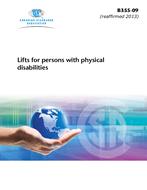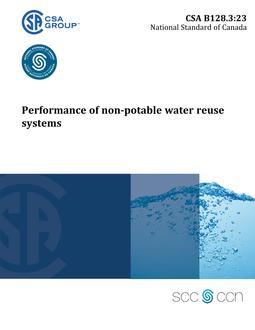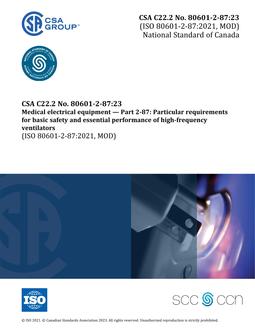
CSA B355-09 (R2013)
Click here to purchase
Preface
This is the fifth edition of CSA B355, Lifts for persons with physical disabilities. It supersedes the previous editions published in 2000, 1994, 1986, and 1981.
Scope
1.1
This Standard specifies minimum requirements for the design, construction, installation, and operation of lifts that are to be specifically used by persons with physical disabilities travelling between fixed points of a building or structure, with a view to safeguarding against risk of accidents associated with the operation of such equipment.
1.2
This Standard addresses requirements for
(a) enclosed vertical platform lifts;
(b) unenclosed vertical platform lifts;
(c) stair chair lifts;
(d) enclosed stair platform lifts; and
(e) unenclosed stair platform lifts.
1.3
This Standard provides recommendations for the inspection, testing, and maintenance of lifts for persons with physical disabilities (see Annex A and Annex B).
1.4
This Standard does not apply to elevating devices addressed by (a) ASME A17.1/CSA B44; and (b) CAN/CSA-B613 for persons with physical disabilities in private residences.
1.5
This Standard does not address location of, access to, and usage of the lifts specified herein.
Note: These factors might be regulated by the enforcing authority.
1.6
The provisions of this Standard are not intended to prevent the use of systems, methods, or devices of equivalent or superior quality, strength, fire resistance, effectiveness, durability, and safety to those prescribed by this Standard, provided that there is technical documentation to demonstrate the equivalency of the system, method, or device.
Note: Authorities having jurisdiction may permit modifications to this Standard provided that technical documentation or physical performance verification can assure the safety equivalence of such modifications to the corresponding requirements of this Standard.
1.7
In CSA Standards, “shall” is used to express a requirement, i.e., a provision that the user is obliged to satisfy in order to comply with the standard; “should” is used to express a recommendation or that which is advised but not required; “may” is used to express an option or that which is permissible within the limits of the standard; and “can” is used to express possibility or capability. Notes accompanying clauses do not include requirements or alternative requirements; the purpose of a note accompanying a clause is to separate from the text explanatory or informative material. Notes to tables and figures are considered part of the table or figure and may be written as requirements. Annexes are designated normative (mandatory) or informative (non-mandatory) to define their application.
Product Details
- Edition:
- 5th
- Published:
- 03/01/2009
- ISBN(s):
- 9781554367740
- Number of Pages:
- 72
- File Size:
- 1 file , 1 MB
- Product Code(s):
- 2419682, 2020261


